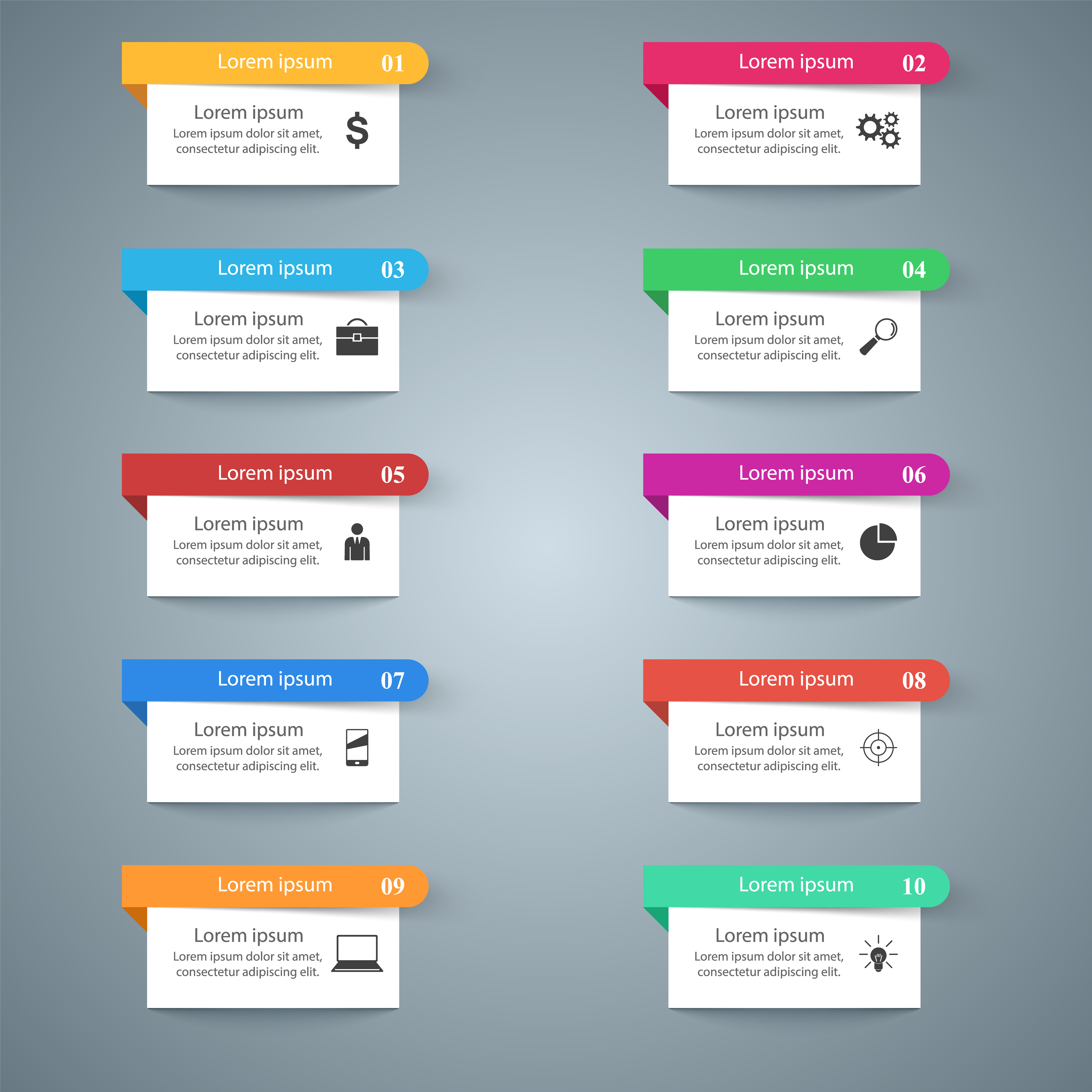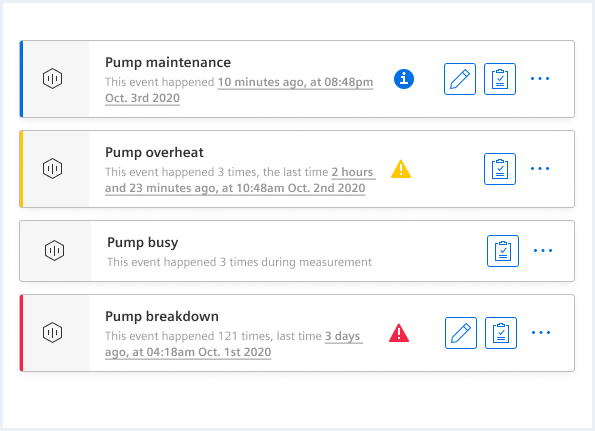Table Of Content

You can check this example to learn how to create a filter list design for your search page. Item List UI Kit is a UI kit resource for SaaS Admin Dashboards which uses an image list design to present all interface information clearly. Mega High Five is an example of a list made for a supermarket store Coop Mega. Its UI design stands out from other packs for eye-catching color schemes.
Less space:
Therefore, in websites and applications where users would benefit from having certain dates more prominent, you should provide them with the ability to personalize the display. Scrolling lists allow displaying a lot of options without taking up a large region of the user interface. Moreover, they enable the user to view the contents of a large number of items without having to move between different sections of the user interface. All the list items are contained on separate rectangular cards, clearly grouped into sections, such as “previous invoices” and “activity income”.
Directing Team for a Single Camera Daytime Non-Fiction Program
In a more simplified example, Spotify uses font size and color to create a visual hierarchy between the song title and the artist. The different size and color make it easy for users to scan a playlist accordingly. Hierarchy plays a vital role in making lists scannable and easier to read. UX designers have several ways to create this visual hierarchy, including typography, color, spacing, images, etc.
OL Circle Cards
It aligns with the natural reading direction in many languages, making it more comfortable for users to scan through the list. Each animation should serve a clear function, whether it’s to draw attention, provide feedback, or guide interactions. If you find this confusing, check my guide to UI animation, where I explain best practices in more detail. Use them wisely, particularly in galleries, product showcases, or areas where visuals are the primary communication tool.

This will dictate the type of list you’ll create, in addition to the type of interaction design and visual design your list UI design will incorporate. For example, many apps allow users to swipe list items left or right–one way to delete the other to archive. In the Wunderlist application, users can personalize the lists they make by starring certain items. They can even highlight these elements more, by sorting the list items based on the presence of a star. Reflecting these personal differences in a rigid user interface design is hard.
However, lists can be tricky to design because of their versatile nature. From designing a simple one-line list to a multiline list with images, metadata, and interactive elements, there are many factors to consider that make lists readable, accessible, and visually appealing. One of the keys to designing a great list UI is making it easy for users to scan content to find what they need. The quicker someone can find what they need, the better the user experience and the more likely they are to use and recommend your product. A list inlay is especially useful when items would consume vast amounts of screen space if their full contents were displayed all at once. With a list inlay, the user can usually see a large proportion of other list items even when the contents of one are displayed, affording freedom of movement from one option to another.
Over 200k developers and product managers use LogRocket to create better digital experiences
Using MUI’s React library, designers can build fully functioning list prototypes. MUI’s React components come complete with states and interactions, so designers only have to focus on product design rather than building everything from scratch. Everything you see in MUI’s documentation, designers can replicate in UXPin without writing a single line of code. Card lists typically include visual content and text and may also include a CTA.
12 Architecture and Design Books to Add to Your Summer Reading List - ARCHITECT Magazine
12 Architecture and Design Books to Add to Your Summer Reading List.
Posted: Fri, 30 Jun 2023 20:38:08 GMT [source]
Todo List App
The first option works a treat because when a user deselects a filter, they tend to look for the position where they started. Rather than separating the items into different sections, they merely allow the items to be grouped together but distinguished as being different from each other. Sign up to receive tips and tricks on how to create online designs that make people take action. In summary, the most significant difference between lists and tables is the data structure. Tables have a specific design, while lists can exist in many formats. UX designers have seemingly endless options and variations within these three list structures.
Benefits That Make List UI Design Worth Mastering
A free online prototyping tool that can create wireframes or highly interactive prototypes in just minutes. To ensure that your list is accessible to people with low vision or color blindness, check that the colors used for foreground and background have enough color contrast. Use a color contrast checker to test if your design passes accessibility standards. If you’re going to include a list in your UI design, which is very probable, you need to think it through carefully. Nielsen Norman group maintain that the left part of the screen receives the most attention in cultures that read from left to right. Therefore, you should always ensure that the most important information is aligned to the left of the screen.
Lists can cause problems for screen readers, creating a poor user experience for visually impaired users. For example, screen readers can’t decipher nested lists correctly. So, designers should use a heading with an unordered or ordered list instead.
Many web and mobile app UIs make use of lists to help their users achieve a variety of daily tasks. That’s why investing time and effort into this aspect of UI design has many payoffs in terms of usability. Sorting works similar to reordering, except users choose from predefined categories rather than reorder list items manually. For example, Spotify allows users to sort a playlist by title, artist, album, or recently added. Designers use image lists when visuals are the primary content–like an image or video gallery. Sometimes a single line of text will accompany the image to provide detail or context.
Spending adequate time planning your list UI design can help you avoid this and make sure your users get the information they need at first glance. Pogo-sticking occurs when either the hierarchy or the subcategory of a list isn’t clear. In other words, when the user cannot find the relevant subcategory, they start clicking on every link to see the resulting screen or subtitles. They then follow up by clicking “back” or they unfilter the category they selected. They do say a picture conveys a thousand words and lists are meant to be scannable.
The most obvious example is a shopping list—the most simple of lists, a collection of items in no particular order. Lists are a fundamental element of web design, providing a structured and organized way to present information. However, with the right CSS styling, lists can transcend their traditional appearance and become visually captivating elements that engage and delight users. We hope that these basics, examples, tools, design principles, and resources of list UI design can help you learn it better, and create an excellent user interface quickly. These list UI design examples and templates for mobile apps can also give you some inspiration. Visual style - The overall visual style of your lists should be in accordance with your website or mobile app, making it easy on the eyes.
Use PicMonkey's mobile app to design on the go and keep your list with you at all times. Access all the same tools you need, even when you need to be out and about. Start exploring our collection now and discover the endless possibilities to elevate your list designs with the power of CSS. Drop-down menus are one of the most common list types that designers use to improve their UIs. This top 40 drop down menu list examples presents 40 drop down menu list examples and the tips that you can follow to create your own lists with ease.
Ant Design supports a default list size as well as a large and small size. A list about lists wouldn’t be complete without the traditional to-do list! This example of a todo list shows how simplicity and minimalism can help get the job done. You then simply add fields to your data master such as “Name”, “Address” and “Phone Number” and call your data master “Contact List”. It’s helpful to use an atomic design approach when deciding how to put these pieces together.
No comments:
Post a Comment